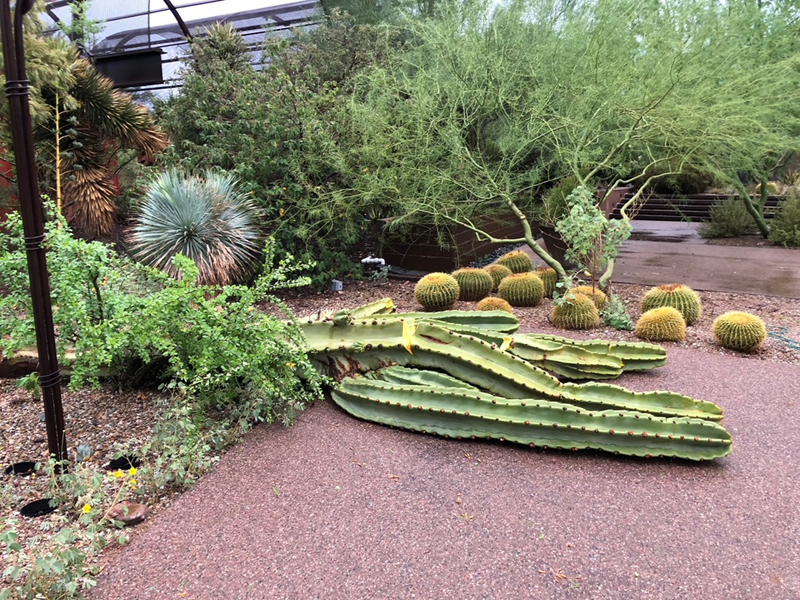Plant damage from the storms?
While we are beyond excited for the rain we have received over the last few weeks and have seen the Garden’s plants turning on their “green glow” from all the new growth, some of the plants didn’t do so well. Here are the top three things to remember for plant care after a storm:
- Plants that have broken limbs, branches, or stems should be pruned. Damage that is not pruned away just invites secondary problems such as disease and insect infestations to the plant. If you have to prune too much of the plant, you may need to consider removal. The plant is already under stress and then removing a large portion can cause more stress and it may not be able to recover.
- Larger plants that have been uprooted will need to be assessed before making the decision to completely remove. Some plants can be replanted or pushed back into place and with a little support may recover. Always consult with a certified arborist when assessing trees. Large columnar cactus may survive for another year or two after being straightened before you can determine if it fully recovered or starts to decline.
- If you received large amounts of rainfall in your area, keep an eye on your plants for what we call “leaners” due to soil saturation. They got through the wind okay, but saturated soil can lead to anchoring problems for the root system, less oxygen in the soil for proper root function and again invite those secondary problems with disease and insects. The last thing you want is a large leaning plant to fall and cause property damage or create a safety issue.
After you have assessed and triaged, give your plants some time to recover before you decide to take further action. You may also notice long term impact on your plants into next season or year. It’s always good practice to walk your yard, observe your plants and environment on a regular basis and keep notes documenting your treatments and actions for reference later. This helps tremendously with future diagnostics.
